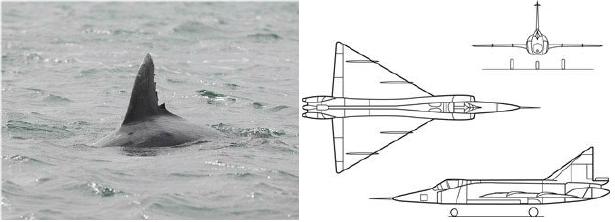Laurens Howle and Paul Weber from Duke University teamed up with Mark Murray from the United States Naval Academy and Frank Fish from West Chester University to find out more about the hydrodynamics of whale and dolphin flippers. Their findings; some dolphins' fins generate lift in the same way as delta wing aircraft.
Using Computer tomography scanning of the fins of seven different species ranging from the slow swimming Amazon River dolphin and pygmy sperm whale to the super-fast striped dolphin, the team made scaled models of the flippers of each species. Then they measured the lift and drag experienced by the flipper at inclinations ranging from -45deg. to +45deg. in a flow tunnel running at a speed that would have been the equivalent of 2m/s for the full scale fin.

Comparing the lift and drag coefficients that the team calculated for each flipper at different inclination angles, they found that the flippers behave like modern engineered aerofoils. Defining the flippers' shapes as triangular, swept pointed or swept rounded, the team used computer simulations of the fluid flows around the flippers and found that sweptback flippers generate lift like modern delta wing aircraft. Calculating the flippers' efficiencies, the team found that the bottle nose dolphin's triangular flippers are the most efficient while the harbour porpoise and Atlantic white-sided dolphin's fins were the least efficient.
Commenting that environmental and performance factors probably play a significant role in the evolution of dolphin and whale flipper shapes and their hydrodynamics, Howle and his colleagues are keen to find out more about the link between the flippers' performances and the environment that whales and dolphins negotiate on a daily basis.
REFERENCE: Weber, P. W., Howle, L. E., Murray, M. M. and Fish, F. E. (2009). Lift and drag performance of odontocete cetacean flippers. J. Exp. Biol. 212, 2149-2158.





Comments